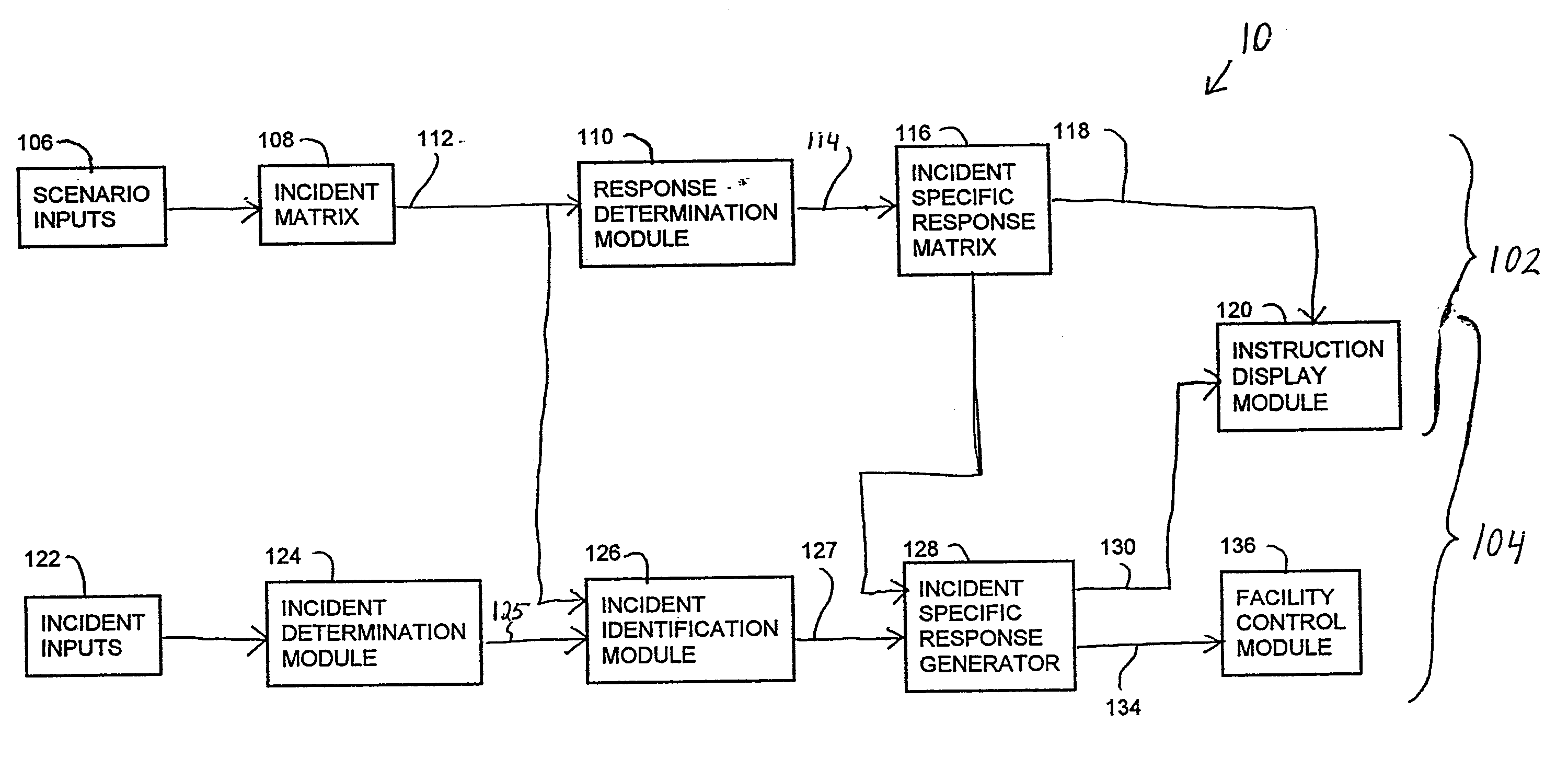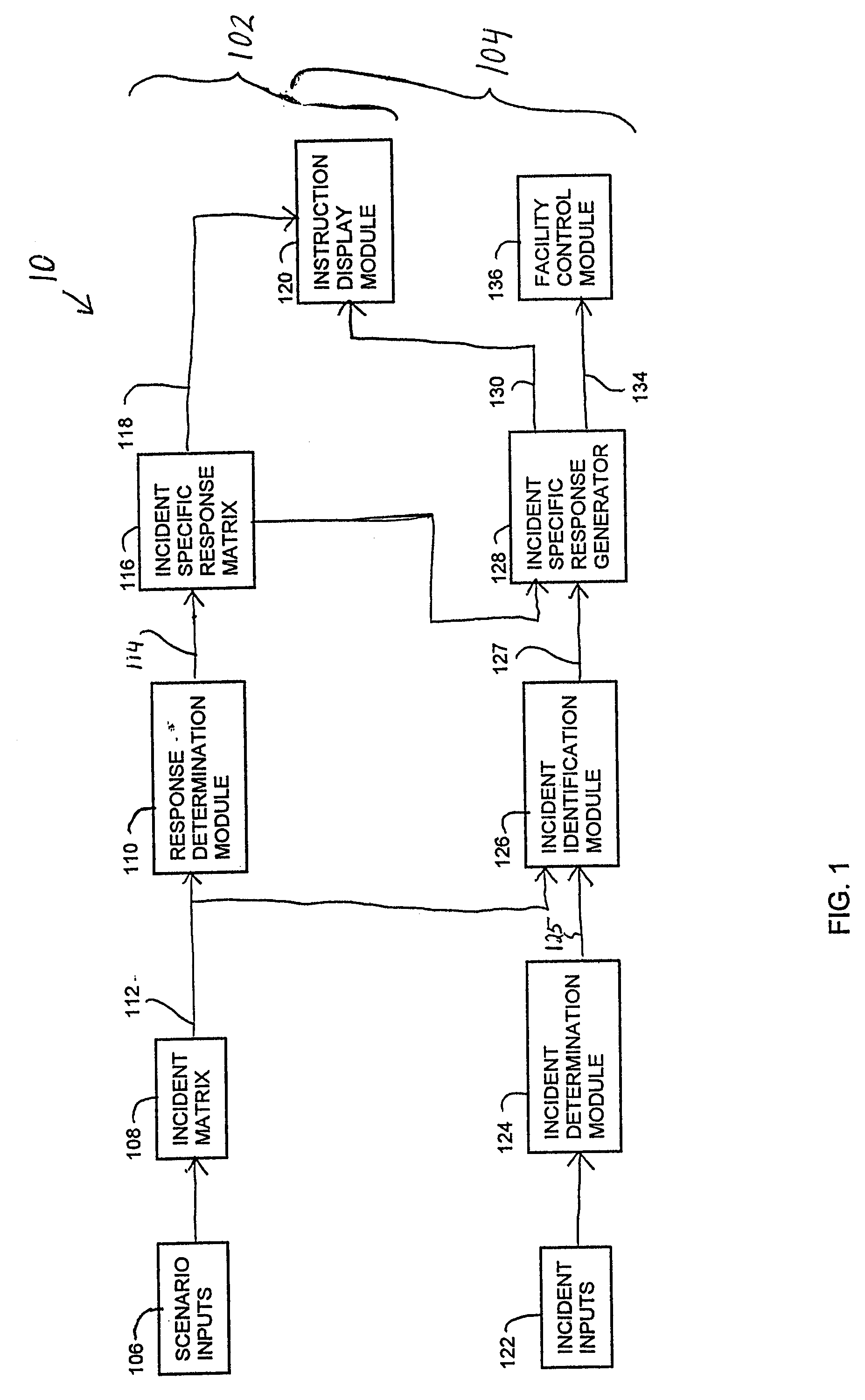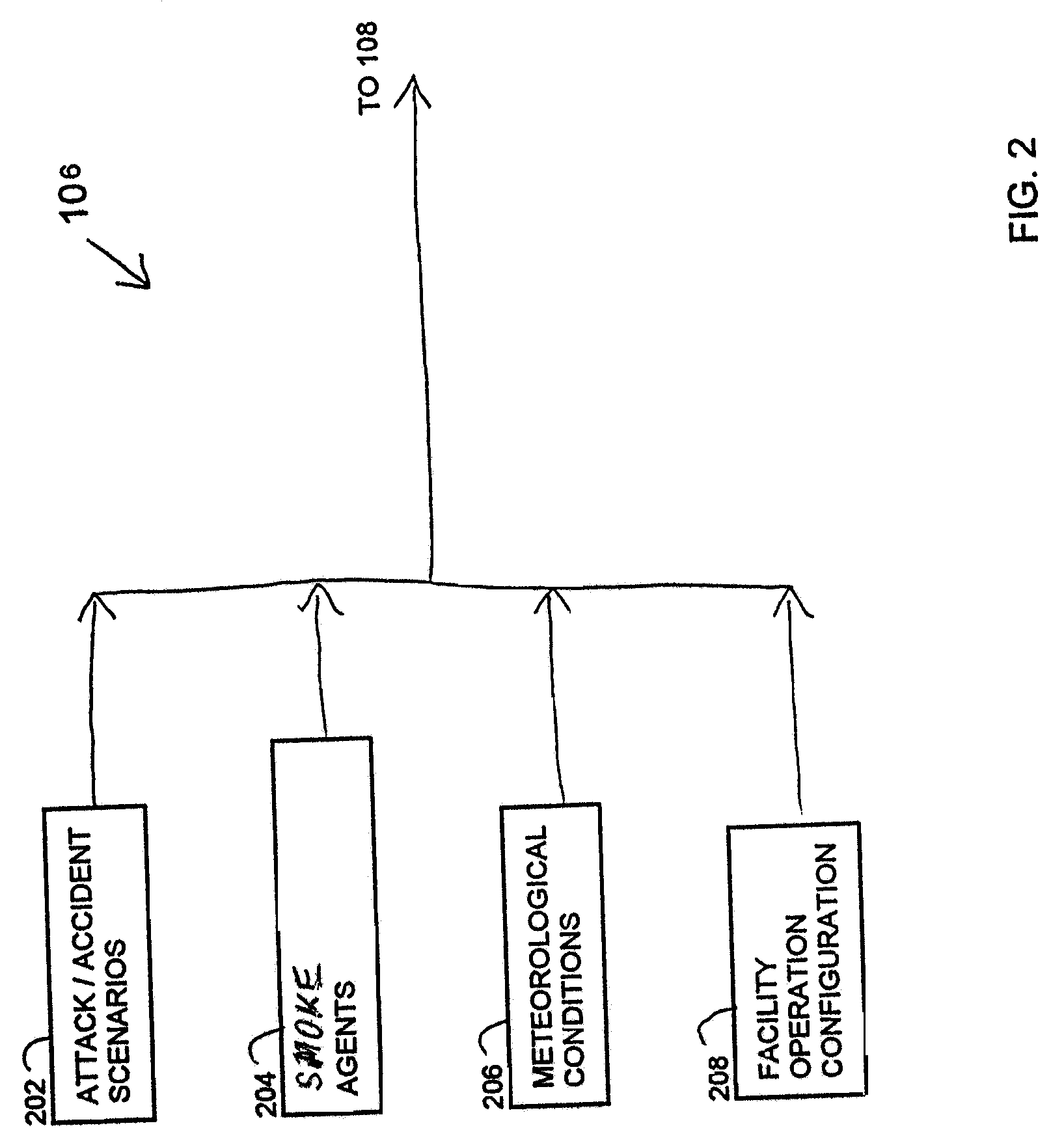Rapid fire emergency response for minimizing human casualties within a facility
a rapid fire and emergency response technology, applied in the field of facilities for evaluating and responding to emergencies threatening human life, can solve the problems of increasing the number of apparently random and heinous terrorist attacks in public gathering places, government facilities and offices, and the loss of human life within facilities, so as to minimize human casualties
- Summary
- Abstract
- Description
- Claims
- Application Information
AI Technical Summary
Benefits of technology
Problems solved by technology
Method used
Image
Examples
Embodiment Construction
[0014] The following description is presented to disclose the currently known best mode for making and using the present invention. The scope of the invention is defined by the claims.
[0015] FIG. 1 is a block diagram of a fire emergency response system 10 according to an embodiment of the present invention. The fire emergency response system 10 has two partitions, a scenario simulation partition 102 and an emergency response partition 104.
[0016] The scenario simulation partition 102 performs the steps of generating combinations of possible emergency scenario inputs before a fire emergency occurs, storing the combinations of scenario inputs that have a significant probability of representing a fire emergency, analyzing possible responses to each fire emergency scenario, selecting a response to minimize human casualties within a facility for each fire emergency scenario, and storing the response to each fire emergency scenario in a response matrix for rapid recall in a real fire emerg...
PUM
 Login to View More
Login to View More Abstract
Description
Claims
Application Information
 Login to View More
Login to View More - R&D
- Intellectual Property
- Life Sciences
- Materials
- Tech Scout
- Unparalleled Data Quality
- Higher Quality Content
- 60% Fewer Hallucinations
Browse by: Latest US Patents, China's latest patents, Technical Efficacy Thesaurus, Application Domain, Technology Topic, Popular Technical Reports.
© 2025 PatSnap. All rights reserved.Legal|Privacy policy|Modern Slavery Act Transparency Statement|Sitemap|About US| Contact US: help@patsnap.com



